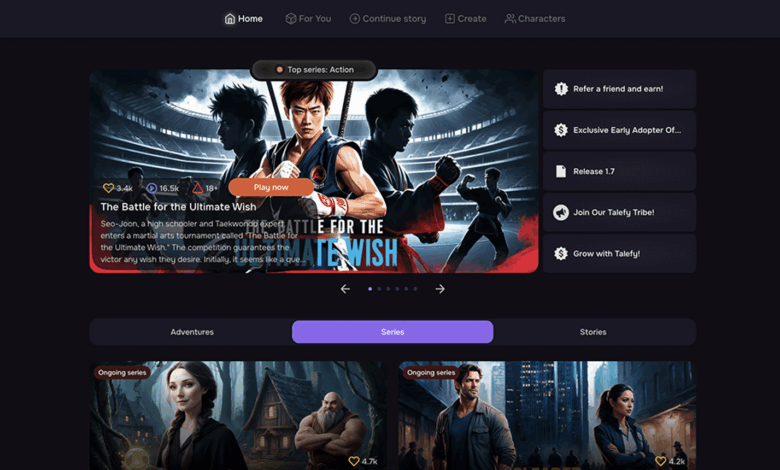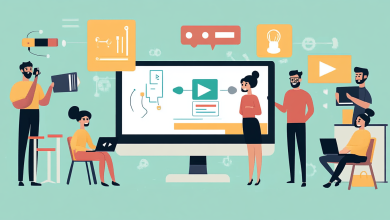
For most of human history, creativity was inseparable from the body. We wrote with our hands, painted with brushes, composed on instruments, and danced with our feet. Expression came from movement.
But generative AI is breaking that link. It lets us create words, images, and even entire narratives without moving a muscle. The question is no longer whether AI can generate content. It can. The more pressing question is: what does it mean when something that has never held a pen or felt a feeling becomes a storyteller?
This shift isn’t just technological — it’s cultural. It redefines the boundary between creator and creation, intention and outcome, observer and participant. The implications go far beyond efficiency or automation. They challenge how we understand art, authorship, and emotional connection.
From Tools to Co-Creators: The Rise of AI Storytelling
Multimodal AI refers to systems that can understand and generate multiple types of content — text, images, audio, and sometimes even video — within a single framework. Unlike traditional tools, these systems move fluidly across formats, responding to natural language prompts and producing richly layered output.
In creative contexts, this means a user can describe a scene, mood, or idea in plain language, and the AI will generate a corresponding image or story. It’s not magic. It’s pattern recognition — trained on vast datasets of human-made content. Yet the results often feel magical.
This ability to simulate human-like creativity without physical experience lies at the heart of modern AI storytelling. These models don’t feel or imagine in the human sense. But their outputs can make us feel, remember, and imagine. That uncanny bridge between statistical reasoning and emotional resonance is what makes them so powerful.
Can You Feel Without a Body?
In traditional arts, the body is central. A sculptor feels the clay’s resistance. A writer listens to the rhythm of a sentence. A dancer learns through the weight of their own body.
AI, by contrast, generates from a place of abstraction. It doesn’t experience, but it replicates. And it can craft a breakup scene, a suspenseful moment, or a love letter that feels authentic to human readers.
This has sparked debate: is it real if it isn’t felt? Is a story less meaningful if it’s authored by a machine? Some argue that without pain, joy, or memory, there can be no true art. Others say resonance is what counts — if a synthetic story moves you, perhaps that’s all that matters.
The Changing Role of the Creator
In this new paradigm, the human becomes more of a director or curator. The prompt replaces the pen. The idea becomes the interface.
Creativity shifts from making to shaping. This doesn’t make human skill obsolete — it demands new literacies: prompt design, narrative control, editorial judgment. The artist no longer labors over each brushstroke but designs systems that produce thousands.
In our work at Talefy.ai, we’ve seen users adapt rapidly. They don’t just consume stories — they shape them in real time. They interact with characters, direct outcomes, and collaborate with AI as if it were an improv partner. The tool becomes a co-creator.
Collaborative and Dynamic Storytelling
The shift toward AI storytelling invites collaboration. A writer might ask the model for alternative endings. A game designer might personalize a narrative to each player. A visual artist can iterate faster than ever before.
The act of storytelling becomes dynamic, branching, and participatory. The AI doesn’t replace the author — it co-authors alongside them. And that opens new doors in how stories are imagined and delivered.
Democratizing Creativity Through AI
AI storytelling also lowers barriers. Not everyone can draw, paint, or write fluently. But many people have stories to tell.
Generative tools let more people express themselves. They give voice to those who may lack traditional training or physical ability but possess imagination and ideas.
This democratization raises questions: Who owns AI-generated content? What counts as original? How do we prevent misuse? These are important debates. But they shouldn’t eclipse the opportunity — a more inclusive and diverse creative landscape.
Synthetic Doesn’t Mean Soulless
There’s a tendency to dismiss AI-generated content as shallow. And yes, some of it is. But the same is true of human-made work.
When used with care, AI storytelling becomes a mirror. It reflects our patterns, values, and intentions. It offers a canvas for experimentation.
AI is not alive, but it can still help bring ideas to life. “Synthetic media” shouldn’t imply a lack of meaning. It signals a shift — from meaning rooted in the creator’s body, to meaning rooted in the shared experience of the audience.
Conclusion: The Human Touch in AI Storytelling
We’re just beginning to grasp what AI storytelling means for creativity. But one thing is clear: the body is no longer a prerequisite for telling powerful stories.
Generative tools allow people to create without typing a line of code or picking up a brush. That makes storytelling more accessible, more adaptable, and often more collaborative.
These stories may be bodiless — but they are not without soul. In this new era, the human role isn’t to compete with AI. It’s to guide it. To infuse it with values, ideas, and vision.
A practical example is Talefy.ai, an AI-native storytelling platform built by a team in Ukraine. With over 50,000 users and growing, Talefy enables people to shape interactive stories through open-ended prompts — collaborating with AI characters, generating vivid illustrations, and branching narratives in real time.
Its custom language and image models support storytelling in seven languages, making creative expression accessible across cultures and formats. Rather than replacing human creativity, the platform expands it — offering each user a dynamic, deeply personalized story experience.
The future of storytelling won’t be written by AI alone. But it will almost certainly be written with it.
________
About Andriy
Andriy Bulgakov is the CTO of Talefy.ai, an AI-native platform for interactive storytelling. With a background in full-stack engineering and product architecture, he explores how machine learning intersects with narrative logic and human creativity. His team focuses on building systems where stories, characters, and visuals adapt in real time to the user’s input.





